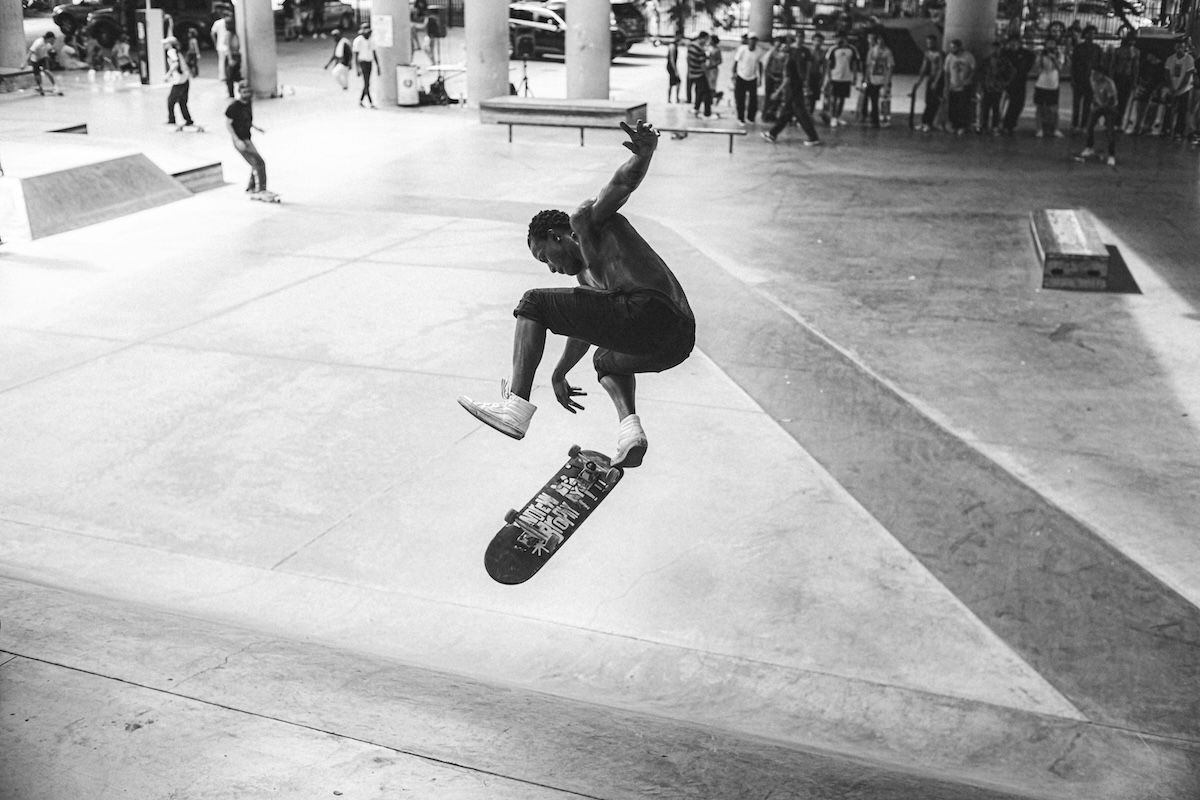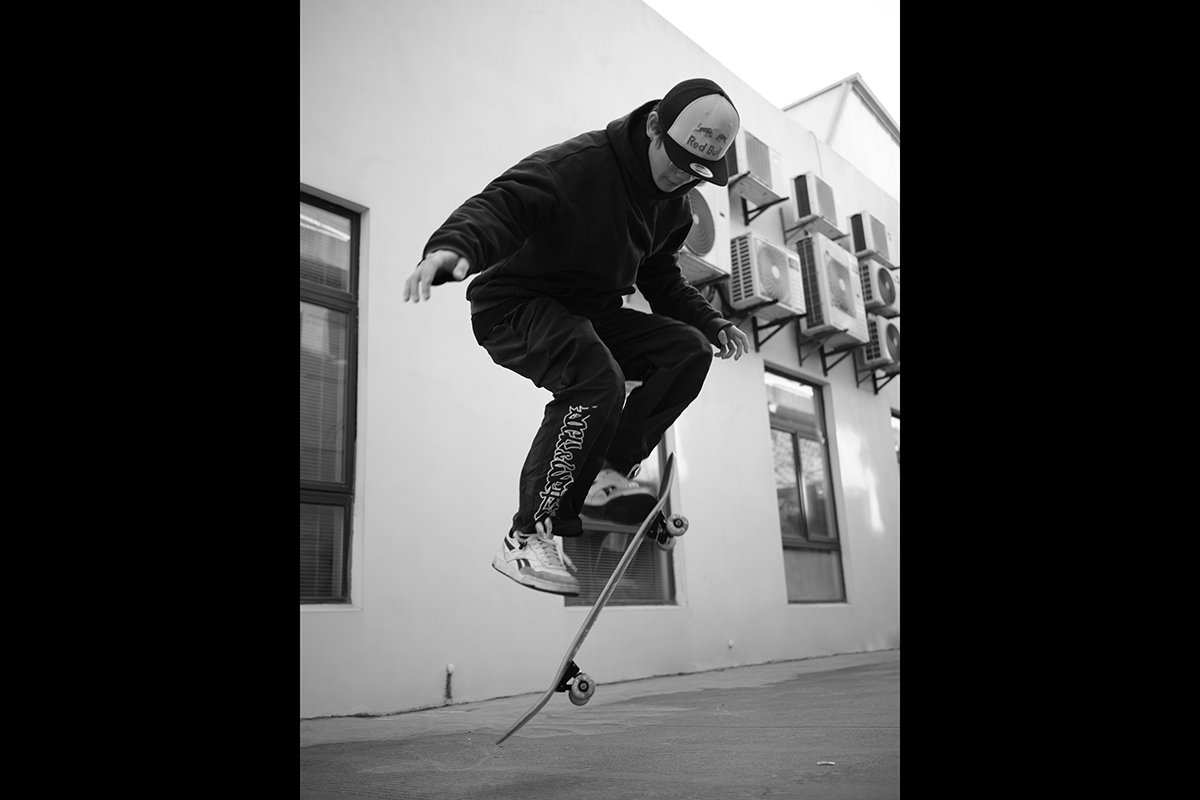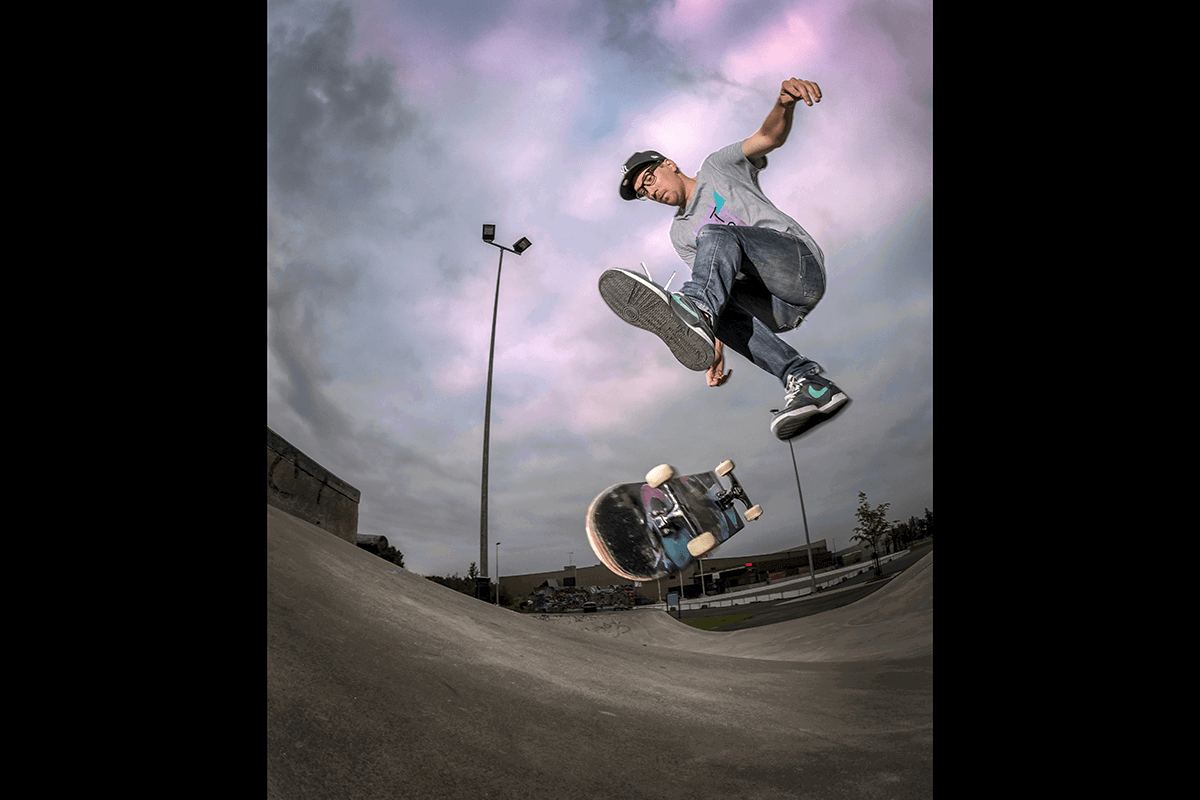Skateboard photography is for you if you find skateboarding amazing and watch skateboarders for hours. It’s even better if you want to capture their fun tricks and freeze them in motion! Read on to find out how to become an excellent skateboard photographer.
Here are 10 tips to help you get authentic skateboarding images and become a successful skateboard photographer.
Scouting for the ideal shooting spot is paramount in skateboard photography. Rather than settling for the obvious, explore your surroundings for unique vantage points. Climb to a spot or crouch down for dynamic shots that capture the skater’s energy.
To truly immerse viewers in the skateboarding experience, consider shooting from the skater’s point of view. This perspective offers an authentic glimpse into the action, showcasing the thrill and intensity of the sport.
Be prepared to get up close and personal with the action. Anticipating and capturing the perfect moment requires courage, agility, and quick reflexes. This can help evoke the raw excitement of the skateboarding culture.

Shot with a Leica M10. 3.4mm, 1/1,000 s, ISO 3,200. Frankie Cordoba (Unsplash)
Skateboard photography is all about finding the right camera angles. Forget the one-fits-all approach. Every trick and every skateboard park looks good from a different angle.
Take images of skateboarders from the ground. Low angles work very well for skateboard photography. This perspective adds excitement and increases the height.
Now, try to shoot from above. Photograph while standing on benches or from around the curves. Getting the skater’s front-facing side in the frame is always a good idea.
Watch the skaters doing the trick and snap a few test shots. This will help you learn what angle works well for certain tricks.
Try to avoid using traditional camera perspectives. Skaters are moving around and doing fast tricks, bending their bodies in surreal positions. Your skateboarding photos should convey the same impression.

Shot with a Fujifilm GFX 50R. 50mm, f/3.5, 1/250 s, ISO 100. 和国 谢 (Unsplash)
Like any other action shot, skate photos need a fast shutter speed. This way, you can freeze the skater’s motion and capture the perfect moment.
Shoot in shutter speed priority, so you don’t have to worry about the right aperture. Your camera will adjust according to the chosen shutter speed.
Sometimes, you might want to capture motion blur. For this, you need a slower shutter speed. Experiment with your camera settings and see what results you prefer.

Shot with a Sony a7C II. 158mm, f/2.8, 1/1,600 s, ISO 100. Andrew Lum (Unsplash)
In the dynamic world of skate photography, relying solely on autofocus may result in missed opportunities. Instead, use manual focus to ensure precision and clarity in your shots.
Anticipate the skater’s trajectory and pre-focus on a fixed point along their path. It could be a rail or the lip of a ramp. By aligning your focus with the skater’s anticipated movement, you can capture them in sharp detail as they execute their tricks.
Practice your timing and focus adjustments to achieve optimal results. With patience and persistence, manual focus will elevate the quality of your skate photography. It will let you freeze the action with stunning clarity and precision.

Shot with a Sony a7 III. 70mm, f/2.8, 1/1,600 s, ISO 100. Landsmann (Unsplash)
Think about the background as part of your photography composition. You can keep it clean and tidy and include only the sky, contrasting the sky with your subject.
Separating your subject from the background is always a good idea in skateboarding photography. But it isn’t easy because buildings, colorful graffiti, and poles often surround skate ramps.
You don’t have to exclude all these details to get stunning skate photos. Use them to your advantage. Incorporate interesting props or architectural elements into the frame for depth and context.
Apply composition rules like the rule of thirds and leading lines. Always make sure you draw the viewer’s attention to your subject. It’s tricky to freeze the skaters’ motion while paying attention to photography composition. But with experience, you will get there.

Shot with a Sony a7R V. 24mm, f/4.0, 1/800 s, ISO 200. Anthony Adu (Unsplash)
You don’t need a specific camera or gear to capture fantastic skate photos. But a few lens types can improve your images even more.
Try shooting with a fisheye lens. The extreme-wide angle lets you get closer to your subject and still includes a fair amount of the surroundings. The fisheye lens also highlights the curves and shapes of the ramp.
Besides a fisheye lens, you can also use a normal wide-angle or a telephoto. The latter helps you emphasize the skater and separate them from the background.

Shot with a Canon EOS 60D. 10mm, f/10, 1/250 s, ISO 400. Joakim Honkasalo (Unsplash)
Getting to know the skaters is one of the most important jobs of a skateboard photographer. Introduce yourself and ask if it’s okay to photograph them while they’re skating.
Some people can feel put off by a camera. And you don’t want anyone to get injured because of your presence. Ask the skaters about their tricks and where they are heading.
With skateboard photography, you have the advantage of being able to talk to your subjects. Discuss the angle you’ll shoot from so you won’t be in their way.
Also, getting to know the skate park’s community is good. This lets you take more personal photos and tell visual stories.
If you are serious about skateboard photography, you should be an active community member. This could help you land photography gigs at local skateboard competitions or practices.

Shot with a Sony a7. 50mm, f/1.8, 1/640 s, ISO 100. Hector Reyes (Unsplash)
You often hear not to cut off your subjects’ heads or limbs, which is sound advice. Full-body skater photos are best. But it’s also good if you don’t ignore capturing other details in the skateboard culture.
First, focus on the skateboards. They often have a unique design. You can also snap photos of the skater’s apparel and accessories. (Our Macro Magic course offers great tips on shooting amazing close-ups.)
Take photos of the skateboard park and the ramp. Capture the surroundings to convey the atmosphere and the vibe of the spot. Also, photograph the skaters’ relationships with each other. They are often more than good friends and usually consider each other family.
Focusing on details like this lets you tell a story with your photos. You can even create a photo or documentary series with your skateboarding photography. Photo projects like this are great to submit to magazines.

Shot with a Sony a7 IV. 35mm, f/1.4 , 1/4,000 s, ISO 100. Bailey Burton (Unsplash)
Skateboarding is about breaking the rules of gravity. And photographing skaters is not about sticking to conventional rules.
Be creative. Try new compositions, angles, or depths of field. Experiment with lenses, camera settings, or even external flashes. Try shooting in different lighting conditions.
Don’t settle once you’re comfortable with certain shooting conditions. Skateboarding is always evolving, and so should your skateboard photography.

Shot with colorful powder and a Canon 70D. 50.0mm, ƒ/2.2, 1/8,000s, ISO 100. Pfüder (Pexels)
You need sources of new ideas and inspiration to keep improving your skateboard photography. Read skater magazines and blogs to stay up-to-date about new tricks and apparel.
Follow skaters and skateboarding-related accounts on Instagram or other social media. Get inspired by the photos and videos.
This is a great way to find new concepts for your images. It’s also an excellent opportunity to learn and better understand skateboarding culture. To begin with, look at the work of the best sports photographers for inspiration.

Shot with a Sony a7 II. 111mm, f/11, 1/250 s, ISO 100. Tommaso Poletti
Skateboarding photography is part of the sports photography genre. But it’s so diverse that you can specialize in capturing skaters and even make a living!
Our most important advice is to learn and understand the skateboarding culture. Learn the tricks skaters perform, how they dress, and how they see the world. Get to know the skaters and communicate with them during a photoshoot.